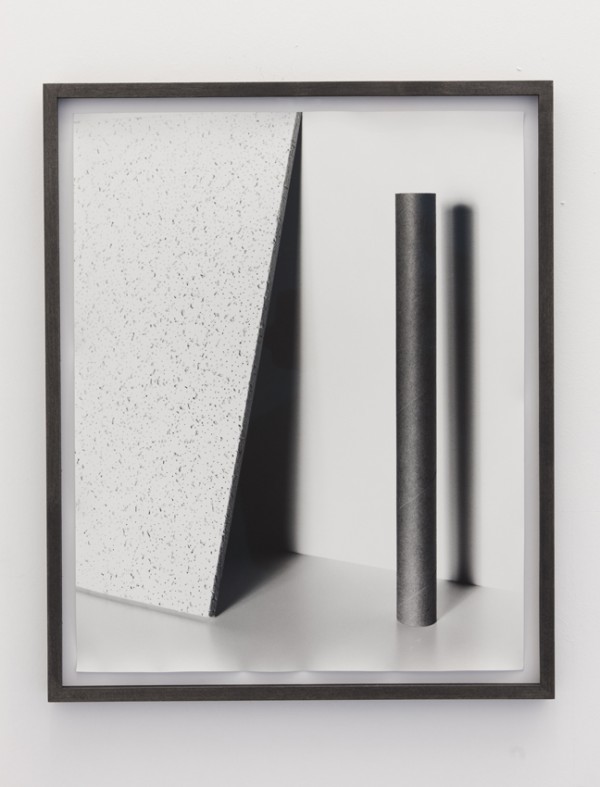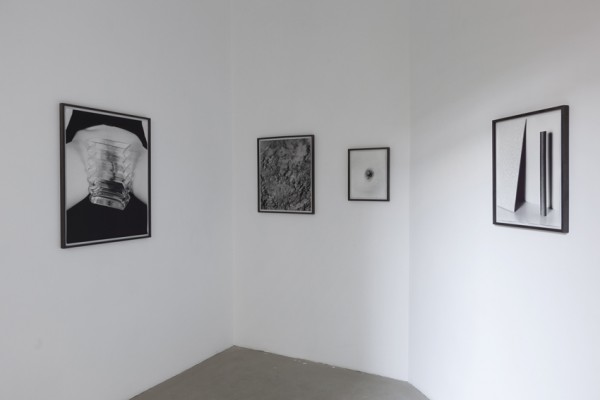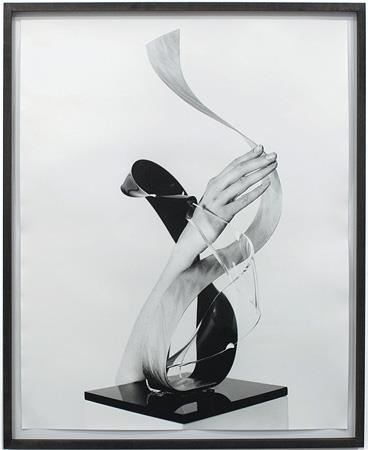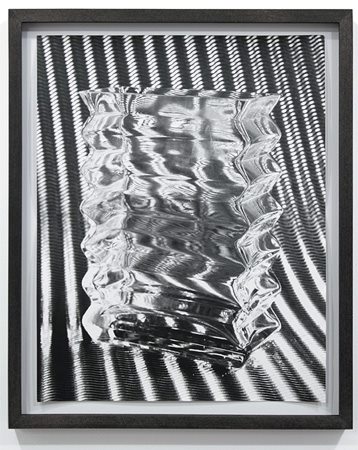Talia Chetrit
Friday, 15 March 2013
Work from her oeuvre.
“Talia Chetrit’s second solo show at Renwick Gallery could be described as a satisfying instance of something simple done well. After all, what could be more straightforward than a group of elegantly composed, black and white, still-life studies of pattern, form, texture and light? Chetrit’s exhibition featured images of thick, bevelled glass vases placed against hard curved planes of tightly wound wire (Vase/Machine), geometric white grids casting shadows against someone’s back (Nude/Grid), and simple forms such as cylinders and flat pieces of wood making neat triangular shadows (Triangle/Tube, all 2011), all sumptuously printed in high-contrast rich blacks and crisp whites.
Spend a bit more time with them, however, and the images become more complex. Two vases are photographed upside down (Drip Vase, 2011). It’s hard to work out what they are to start with – the simple optical trick makes them anew in the mind; they look like gloopy, melting plastic stalactites. In another image, Handstand (2011), a naked woman, in what looks to be an artist’s studio, is also photographed upside down, although here she’s doing a handstand, next to one of the vessels in Drip Vase, and an assortment of other props. Hand/Sculpture (Modular) (2011) shows a hand clasping a bendy piece of tubing – is it a sculpture the hand is holding? A prop? A busted length of piping? What is it a modular part of? In a sister photograph, Hand/Sculpture (2010), a hand appears intertwined with a scrappy, twisting abstract sculpture on a plinth – an object that looks like a piece of Modernist doggerel. Perhaps the hand is trapped there, or perhaps – given the strangely low angle at which it meets the sculpture, as if sneaking up on it from below – the hand is trying to steal the object on the plinth. The wrist and arm the hand is attached to look strangely elongated, an awkward angle that gives you pause to wonder whether the hand is real or not. In contrast to the vases, sculptures and human forms, Dirt (2011), as the title suggests, depicts a patch of soil, a shallow triangle shape dug into part of it, next to a smaller triangular shard of flinty material. Chetrit’s images start to cross-reference each other; the same vase appears in different photographs, along with repeated forms such as tubes and triangles. You start to notice how materials that play at being transparent – thick, sculpted glass or geometric grid – are distorting the background they’re placed in front of, warping the regular patterning of metal or imposing itself across the contours of a back. These photographs are plugged into each other, generating a network of tiny signals.
What particularly intrigued me about this group of images was how that network of signals was not confined to formal relationships between the objects depicted in the images. There appeared to be a subtle semiotic layering occurring; allusions to art history but also commercial photography. Chetrit’s images speak to the history of still life, and also the objectified representation of women within the avant-garde moment of early 20th-century Surrealist photography (the ghost of Man Ray is clearly present, especially in Nude/Grid, as is László Moholy-Nagy in Chetrit’s approach to photographing objects). Looking at the high-contrast printing, and the way they’re presented in simple metal frames, I also couldn’t get away from thinking about how tasteful they look. And just as you arrive at that word – tasteful – that’s when Chetrit’s work reveals further levels; the high-contrast prints, the female hands and the mute, enigmatic compositions (in particular, the hands holding sculptures) remind me strongly of fashion photography, or of 1980s Athena posters – black and white, hard-edged, cool yet mysterious. These are still lifes of both objects and styles, vanguard Modernism and high-end perfume ad all rolled into one. Chetrit’s photographic still life studies intersect with historical allusion and commentary on how photography’s stylistic codes get absorbed into a mainstream of visual representation. Did I say something about these being simple?” – Dan Fox for Frieze.




